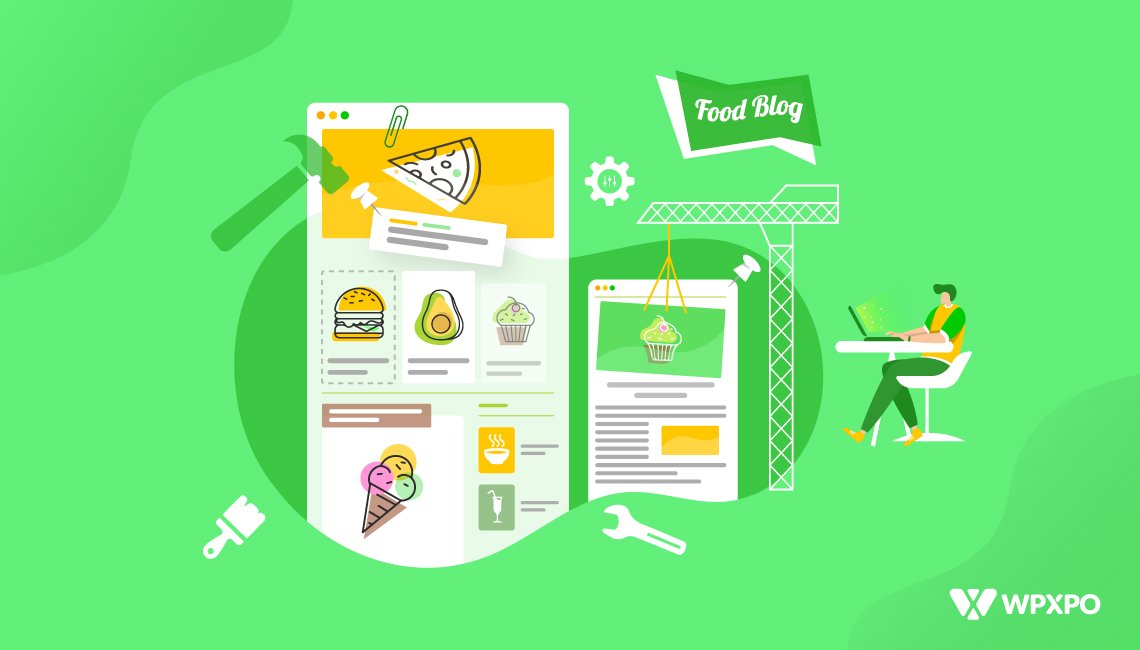Introduction
Amateur foodies are super passionate about their cooking. They are constantly trying to spice up their recipe game. And they also have the urge to share it with the world.
Are you one of those people who are passionate about cooking? Are you ready to share your mind-blowing recipes with the rest of the world?
Well, you’ve come to the right place. Because today, we’ll be discussing how to create a food blog that lets you share your creations with the world.
Many of you may have this question in mind:
Is it hard to start a food blog?
Today, it’s easier to start a food blog than sell something on the streets. You can easily get up and running.
Starting your blog – planning your niche to installing WordPress and setting everything up [yes, we will be using the WordPress Content Management System (CMS)], shouldn’t take you more than 30-minutes [provided you’ve done some brainstorming about what you want to do. ]
You can follow these 9-steps to create a wonderful food blog:
- Choose a Niche for your food blog
- Choose a robust domain name
- Choose a Blogging Platform
- Choose a proper hosting provider
- Install WordPress to launch your Website
- Install and activate a suitable theme
- Install and activate plugins for WordPress
- Use blog promotion tactics
- Monetize your blog
These 9-steps are easy enough to follow. If you have the time to do some of your research [we highly recommend you do this], it will be highly beneficial. As far as monetization goes, it’s something that will help you turn into passion into a money-making endeavor.
Let’s go through each of these steps one by one.
1. How to Choose a Niche for Your Food Blog
You need to be super careful in this first part. This is where people make mistakes.
In many cases, bloggers tend to shoot for the stars, meaning they go for a broad competition. And that’s something you may want to avoid at the very beginning. Because building authority [we will be discussing that in a later part] for a broader niche will be hard.
Also, select something you are highly passionate about. If you don’t do so, you may end up losing up to the competition.
What you want to do is narrow down your competition. In other words, you should choose a particular niche to show off your expertise. Every 60-seconds, more than a 170-websites are going live. So, you may have to do some pre-digging before starting off with the rest of the process.
If you want, you can read the following blog on niche validation and research. It’s an excellent piece written by John Rampton. You can find it in the resources section at the very end.
What are the Key Food Blog Types
Finding the right niche for your blog is tough if you’re just starting out. If that’s the case, then you may want to look at the various food blog types that are on the web. This can help generate ideas:
- Diet blogs (for example Keto, DASH, Paleo, WW, and more).
- Vegetarian blogs (Pescetarians, Pollotarians, lacto-vegetarians, and more.)
- Recipe Blogs ( quick recipes, easy recipes, recipes for workaholics, and more.)
- Region-specific cuisines ( Greek, Asian, Italian, French, Indian, Thai, Chinese, and more.)
- Cookbooks
- Food, travel, and photography.
If you’re just starting out, then you should do some more digging (maybe some soul searching as well). Maybe you can come up with your own niche (who knows!). Just make sure to find one that suits you and your style of cooking.
You may want to take some inspiration from the top food bloggers in the industry. We have a resource for you to check out somewhere at the end.
2. How to Choose a Domain Name for a Food Blog
It’s another crucial part. In this section, you are getting the answer to the question: ‘How to create a unique food blog?’ Because without the right name for your domain, you won’t get very far. As a matter of fact, it directly impacts your Search Engine Optimization Efforts.
The general considerations you need to make are:
- A Sweet and Punchy Name
- Something that goes with your style of cooking
- Keep it short
- Focus on something easy to remember
These are just a few of the general considerations. There are other considerations as well. You can check out the following resource to find out proper domain naming practices. Make sure to check out the resources section at the very end.
3.How to Choose a Food Blogging Platform
Before starting with what we recommend, let’s start with what we DON’T Recommend:
Free Hosting
It’s basically the answer to the question: ‘How to create a food blog for free?’
With free hosting, you do not have to invest in anything. You can pretty much start with $0 and start your website. Sites like WordPress.com, and others are decent choices in this case.
The above-mentioned choices are all great. And you can probably create great blogs on your own with these platforms without any specialized help. Cool!
Unfortunately, with free platforms, your options are very limited. Your hands will be tied down in terms of customization. As a matter of fact, you will not be able to create a food blog that matches your style. And there’s the fact that you may be pelted with ads on some free platforms, urging you to upgrade.
The solution here is to use a legit hosting platform. And yes, we will be using WordPress for that matter.
Why WordPress
Over 40% of all the websites in the world are powered by WordPress. And that’s not all, it powers almost 15% of all the top websites in the world. Moreover, at the time of creating this content, more than 500-websites are being built on the WordPress platform.
The reason for these heavy stats is the usability of WordPress. You can easily create, curate, edit, and manage your website with this CMS (Content Management System). No other CMS can offer such flexibility of use as of now.
4. How to Choose the Proper Hosting Provider
Of course, if you want to run a WordPress food blog, you will need proper hosting. Here is a list of 5 proper WordPress hosting providers from our findings. You can choose to go with these options. Or you can pick a hosting of your choice:
Choice 1: SiteGround
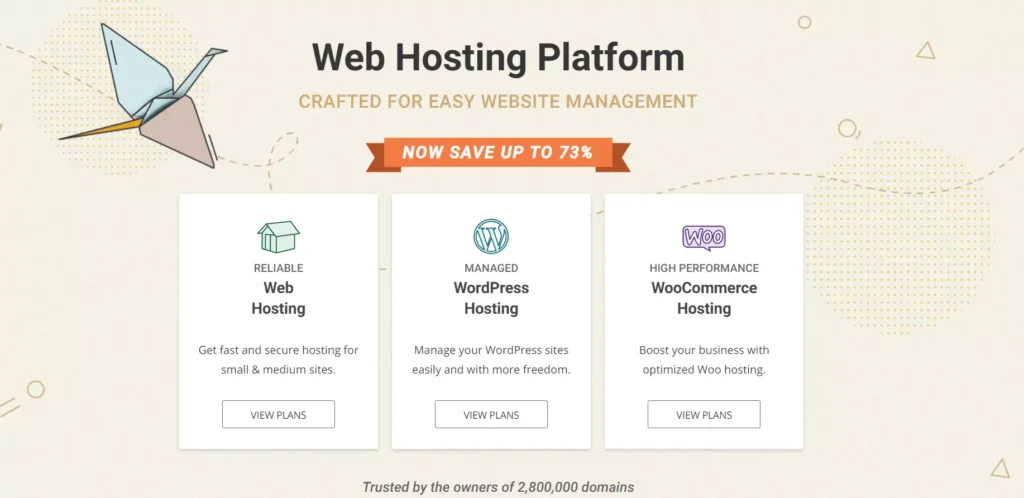
Price/month: Starting from $3.99 for 1-website
Space: 10-Gigabytes (GB)
Bandwidth: 10,000 visits
Good to Know: Close to 93% of users renew their hosting plan
Choice 2: Bluehost

Price/month: Starting from $4.95 for 1-website
Space: 50-Gigabytes (GB)
Bandwidth: Unmetered
Good to Know: Recommended by WordPress
Choice 3: Hostinger
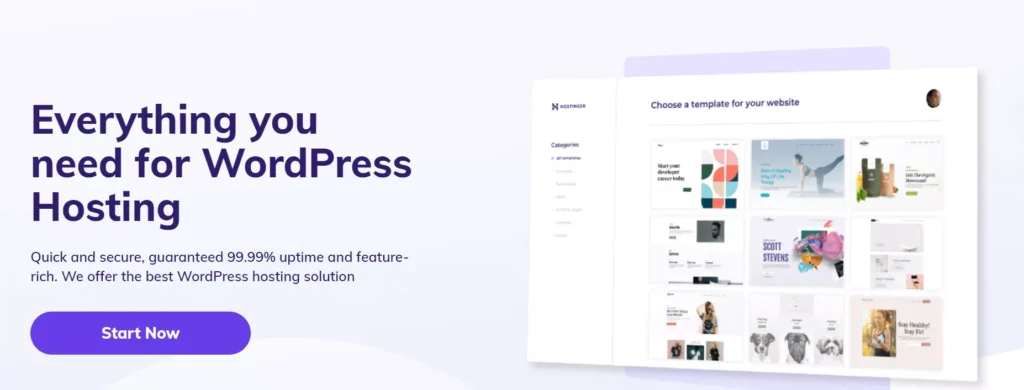
Price/month: Starting from $4.99 for 1-website
Space: 30-Gigabytes (GB)
Bandwidth: 10,000-visits
Good to Know: You get 1 free domain
Choice 4: Dreamhost

Price/month: Starting from $2.95 for 1-website
Space: Unmetered
Bandwidth: Unmetered
Good to Know: Offers good value for money
Choice 5: Hostgator
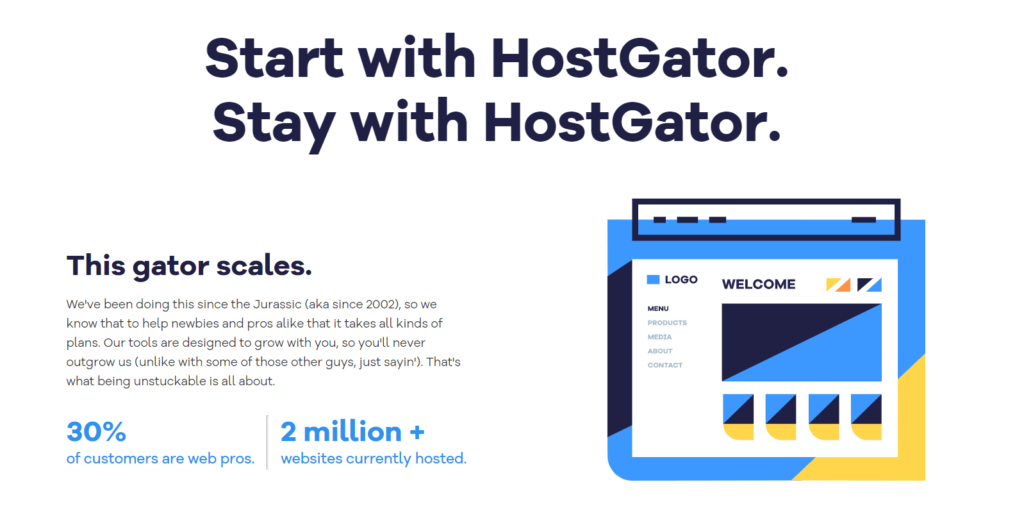
Price/month: Starting from $3.95 for 1-website
Space: Unmetered
Bandwidth: 100,000 visits
Good to Know: You get 1 free domain
***Price of the hosting plans are subject to change.
5. How to Install WordPress to Launch Your WordPress Food Blog
All of the options we mentioned above offer 1-click WordPress installation. But, of course, you will need to set up your WordPress host first. Unfortunately, it is beyond the realm of our discussion (maybe next time). For now, we’ve got a quick tutorial at the very end of the post.
6. How to Create a Niche Food Blog with the Right Theme
As you’re moving to create a unique WordPress food blog, you’ll need to focus on designing your website. Creating a food blog requires you to choose your own brand colors, use the right theme, design the blog in such a way making it easier for the reader to interact with the content on your blog.
You can choose brand colors [check out the resources section at the very end] and use them across the food blog in a meaningful. Since we are using a content management system, we will need a decent theme to go with it.
Installing a WordPress theme is easy (Even easier than setting up your domain and hosting). All you have to do is:
- Go to Appearance> Themes on your WordPress dashboard.
- Write the name of the theme on the right search box [Or if you have a theme already you can download it with the add new button].
- Install and Activate the theme.
That’s all there is to it. Your theme will be ready for customization. But now, the question is: how to create a successful food blog using the right theme?
There are 10,000+ themes available for WordPress. So, it can be hard to find the right WordPress food blog theme. There’s a couple of things you can look out for:
- There are plenty of theme directories like WorPress.org, athemes, ThemeForest, TemplateMonster, and more. You go to these directories and preview the themes. You’ll be able to see how they look in real scenarios.
- The visual appeal isn’t enough, you will need to check the ratings and reviews of these themes. If you see critical reviews regarding the theme’s compatibility and support, you may want to skip that option.
- You should not skip the feature set consideration. Make sure to check what features you’re getting (visual appeal, functionality, accessibility, support, and more.)
You can also check out the guide on choosing the best Dark Theme and Templates of 2023
7. Install and Activate Plugins for WordPress
Since WordPress Gutenberg is quickly gaining ground, you may want to consider installing Gutenberg-based plugins for WordPress and work your way from there. We highly recommend using the PostX Gutenberg blocks plugin [as we will demonstrate in a bit] for creating wonderful food blogs.
It’s a good idea to use Gutenberg plugins for making your site ready for the future days. If you wish to use the Gutenberg Post Blocks plugin, then you can unlock a lot of potential for your food blog from a design and structural standpoint.
Here’s what we’re going to do:
We’re going to start from scratch and show you the power of the PostX plugin. Do take note that we will be using the GeneratePress theme (we like it very much!) for the purpose of giving you some insights about the whole process.
Let’s get started with the process:
Installing the PostX Gutenberg Blocks Plugin
Installing the PostX plugin is the same as any other plugin. All you have to do is:
- Go to Plugins> Add New from your WordPress dashboard.
- Search from ‘PostX’ using the Search Box.
- Install and Activate the plugin.
That’s all there is to it. You can now use the free version of PostX with the website. However, in order to use the advanced features of PostX, you will need the pro version of the plugin.
Installing the pro version of the plugin is tricky. So we’re routing you to the plugin documentation where you can find the right way to add the Pro version of PostX to your WordPress food blog.
Now, PostX has ready-made Gutenberg blocks, layouts, and starter packs. If you have contents ready to go, you can just import a starter pack from the PostX Block Library and import it. Your website will be ready in a couple of seconds.
In order to import a PostX starter pack, all you have to do is:
- Go to Pages>Add New and create a new page.
- Once inside the page click on the ‘Block Library’ on the top right.
- You’ll see a ‘Synchronize’ button. Click on it for new design updates.
- Choose a Starter Pack of Choice from the block library.
- Import the design.
Once imported, you’ll find all your posts aligned and ready to go. You may have to change some heading titles and others elements [You’ll find all the settings to do so].
Quick Note on Starter Packs
Remember we talked about using themes with your WordPress food blog? Well, with PostX, you don’t have to install any extra themes, you can pretty much get started with the default settings in WordPress.
How’s that you ask?
We’ll PostX comes with some built-in starter packs. With these starter packs, you can create your food blogging journey in just a few clicks. These starter packs are built with ready-made blocks. So, if you need to get your WordPress food site up and running quickly, you can use these starter packs and be on your way.
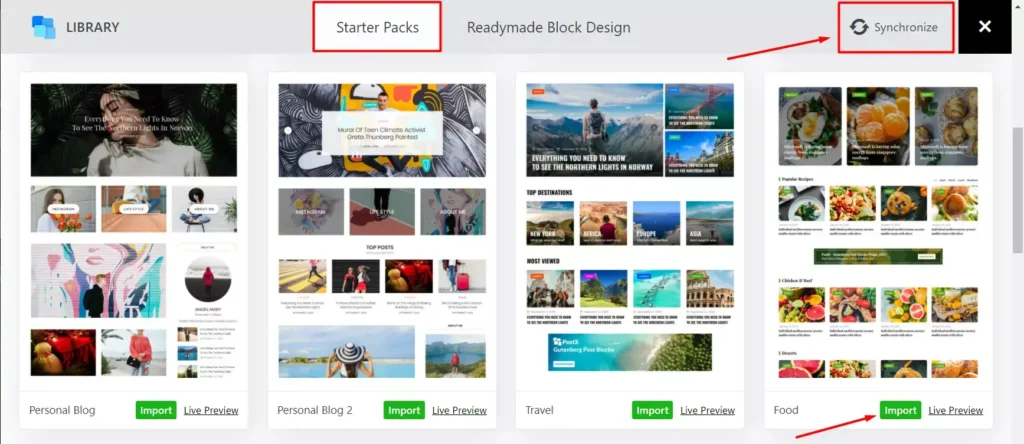
*** The synchronize feature is super useful. You can use it to get access to the latest starter packs and ready-made block designs of PostX. Make sure to use it for quick access to the latest design releases.
👉 Get PostX Pro to unlock all exciting features and make amazing Websites
Now, let’s get back to building a demo page from scratch.
In case you wanted to create a demo page from scratch, PostX has that option available as well. You can use the readymade blocks to create pages from scratch and use features like Advanced Query, AJAX Filtering and Pagination, Dynamic Slider, and much more.
But before starting with any of that, here’s a quick overview of how the page looks in reality:
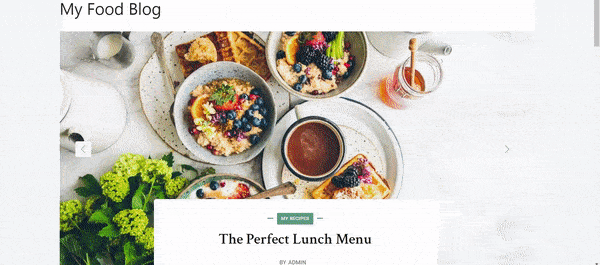
Dynamic Post Slider
We have a dynamic post slider at the very top, perfect to showcase your recipes with powerful images. You can do a lot with the post slider. Since it’s a ready-made block, you can easily change all the settings from the general tab. And if you want, you can import other layouts as well.
Advanced Query Builder
We’ve used the advanced query builder in creating the ready-made post grid blocks. In the advanced query settings, you can set queries based on the reviews, popularity, date, comments, and more. Also, you can showcase posts based on the date, custom taxonomy query, post tag, and more.
These custom queries help out a lot when it comes to offering custom posts to your readers. Here’s what we’ve done with our design:
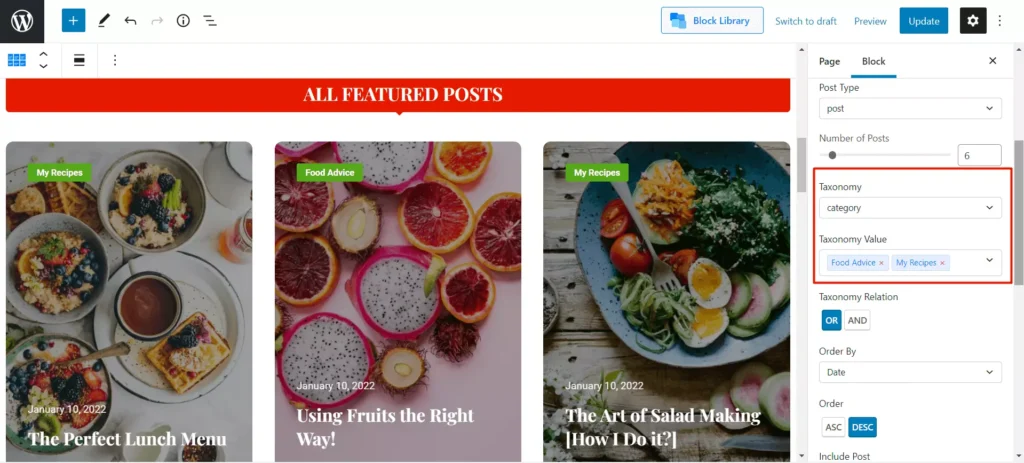
AJAX Filtering and Pagination
PostX features excellent filtering capabilities. This is also particularly helpful when it comes to offering tailor-made suggestions to users. You can filter categories and post tags to offer custom content to your users.
If you see the demo, you’ll know what we’re talking about:
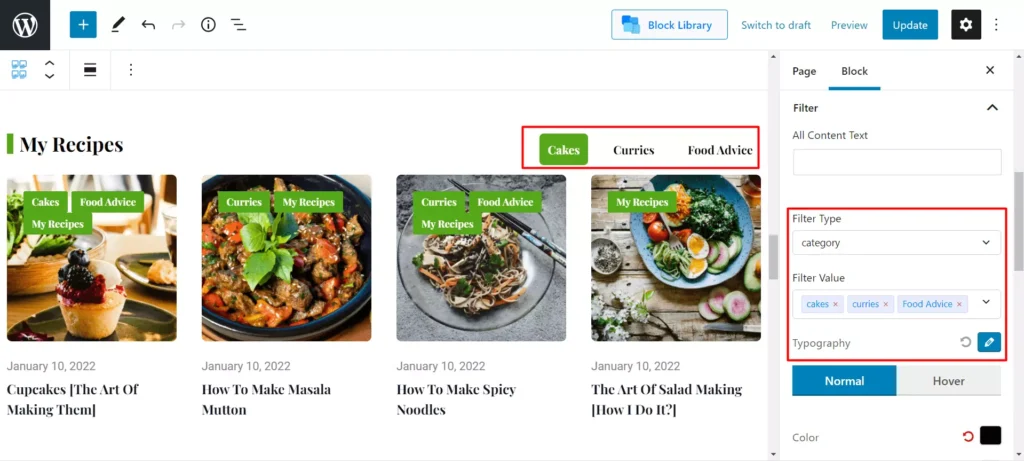
The same goes for AJAX Pagination as well. It offers proper functionality in the hands of the user. In short, the user feels comfortable navigating through the contents of your website.
These are some of the key features and functionalities you can use with PostX. But, there are other useful features as well.
For instance, PostX has a really dynamic Table of Contents Addon that can offer an excellent user experience. It’s very user-friendly and doesn’t require any specialized knowledge.
You can use it just like the readymade post blocks we talked about earlier. If you have a complex recipe that needs a proper rundown, a table of contents block can be of great help.
Here’s a quick video to share the features of the table of contents block:
Another cool feature of the PostX Gutenberg blocks plugin. And that’s the saved template. If you’re looking for the answer to the question: how to create a food recipe blog?-then the ‘Saved Template’ functionality of PostX can help you out.
How does it do that?
Let’s say you create a template with PostX that looks really good. You want to reuse it. And that’s possible with the ‘Saved Templates’ functionality. All you have to do is create your template using the addon. Then with the help of the shortcode functionality, you can easily use the template on other pages.
8.How to Promote Food Blog?
You have your website ready to go. You are now the proud owner of a wonderful and unique food blog. Congratulations!
But, the journey doesn’t end here. There’s a lot more ground to cover. Because you do have excellent recipes and thoughts on food to share. But there’s one major caveat:
There’s no one to read your food recipe blog.
In order to make people read your blog, you need to help them find your content. That’s what blog promotion is all about. You are making ways for the user to find your content and see if it’s really worth their time [which we are sure it is].
Developing Authority
Being an authority in your particular food blogging niche is super important. It is a sign to the people that you:
- Offer authentic and tasteful content
- People trust you because of your ingenuity
- People think of you as a legit source of information and inspiration
These are the 3-key things that will help you build yourself as a legit food blogger. So, how do you maintain them?
Maintain Ingenuity
If you want to become a successful food blogger or food reviewer, then you need to be authentic. You can’t just beat about the bush and think people will take your word for it.
It’s not just true for the web in general, but it holds true in the real world as well. People will only think of trusting you if you:
- Offer information that you have discovered and want others to follow
- Help others find the right type of help with their cooking
- Offer authentic food-related information from trusted sources
- Maintain the same level of consistency in all of your content.
Consistency and ingenuity are super important. Don’t just share legit content from your end. Make sure to share original work from others as well. And, above well, if you aspire to become a legitimate food blogger, make sure to remain consistent till the very end.
Maintain Visual Consistency
This is very important for a food blog. Especially if you’re just starting out.
The images you take need to be consistently better. They need to appeal to the reader, rousing their appetite. It’s super important that you grab the attention of the reader with eye-catchy, mouth-watering images.
Unfortunately, that’s not enough. You will need to outperform the competition. So, your images will have to be punchy, yet they will have to be optimized for the Search Engines as well.
Here are some tested practices you can keep in mind:
- Make sure to choose either PNG, JPEG, or WebP image formats
- 20-25% of your website’s weight will be of images. Make sure to compress images before using them. TinyPNG is a popular image converter you can use. This can boost your site speed by 30-35%.
- Use copyright-free images at all times
- Make sure to change the image alt text properly. Use the recommended best practices for SEO
- Use proper image title and description
- Try and make your images mobile-friendly
- Create an image sitemap for better crawlability.
If you take these practices into account from the very beginning, then you’ll have a better chance of defeating the competition. By no means you can make them all happen at once. Remember we asked you to do some research for unique niche-focused food blogging? This is where you put some effort.
*** Here’s a small tip: Geeting proper visuals requires that you keep your work area clean, bright, and appealing. Because better visuals require you to take advantage of your cooking space. Even if you’re chopping something, try and make it look visually appealing.
Be dominant in the social media space
If you’re not willing to reveal yourself to social media, then we recommend that you don’t start on the journey to becoming a food blogger. Because social media is the most powerful tool for the exposure of your niche food blog. Here are some quick stats about various social media platforms and their exposure:
- More than 500-million Facebook Stories are posted every day.
- Facebook gets 500+ new users every day.
- Facebook accounts for 21% of all social media traffic.
- 70-80% of retail companies get their customers from Facebook.
- 90-95 million photos are uploaded daily on Instagram.
- 50-60% of businesses link Instagram stories to shop pages.
- 60-70% of views on YouTube views come from mobile devices [very important].
- 500-million Twitter posts go live daily.
So, you can see that people have a lot of interaction on social media.
Nowadays, almost everyone is on social media. Whether it’s Facebook, Twitter, Instagram, or Tiktok, there is the possibility for massive exposure. Make sure to invest some time to create an audience in any of these platforms, especially if you want to grow your food blog in a quick and natural way.
Social Media Marketing
In order to make your presence on social media, you will need to lay out a proper strategy. Because without it, you won’t be able to establish and increase an audience base, which is the primary goal for promoting your WordPress food blog.
Here are some important tips for you to follow:
- Write down your goals. This way, you increase your chances of execution by 30-40%. Make sure to keep them small, yet precise [‘SMART Goals’].
- Try and learn who your audience is. Make sure to develop correspondence and gather their feedback.
- Create a wide variety of content for separate social media platforms.
This is very important. If you try to promote written content on Instagram, that may not work properly. Because Instagram prefers and promotes visual content.
So, for visual content, Instagram and Pinterest are the best. Facebook is also great for appealing news and, entertainment content. Since we’re working with food blogging in mind, it’s probably a good idea to focus on Instagram and Pinterest to promote your food recipe content.
- Make sure to offer helpful content first. People don’t like to be told what they can buy. Rather, they prefer to receive help in the most meaningful way.
- According to research, video content offers more appeal to the users. They are more engaging and enable you to build an audience base quicker. As a matter of fact, Facebook Live helps you engage 6x more with your audience. So, make sure to prepare a solid video marketing strategy.
- Make sure to go with the best tools if you are hell-bent on expressing yourself as a legit food blogger in front of the audience. Video creation tools and social media automation tools can help you out in this regard.
Remember we talked about focusing on Instagram and Pinterest? Well, if you want better images faster, then you will have to focus on proper image editing and production tools. Tools like Adobe Photoshop, Canva, Visme, and others can help you out in creating and editing proper photos for your recipe blog.
- Connecting with your audience is key. Make sure to interact with them on social media. Create Facebook Groups, offer helpful suggestions, feature noteworthy suggestions of your audience to the public. This way, you can create a proper user base on social media who are very likely to stay with you for a very long time.
Collaborate with other food bloggers
Collaboration with trusty bloggers around the world will also help create credibility. It can increase your interaction rate by more than 10-times. Again, social media is a great source to reach out to professional foodies. You can arrange cook-offs, build recipes and share them on Facebook live, and more.
Remember to follow potential food bloggers who have a solid audience base. Focus on what they do and what kind of content they promote. That will help you devise a collaboration plan.
Create and Promote Video Content
We did mention video content to be highly effective in creating an audience. Creating and sharing videos on platforms like YouTube and Facebook aren’t very different. But there are strategic differences.
For the most part, you will need to follow some basic guidelines:
- Survey the needs of your audience.
- Offer helpful cooking demos, short recipes, and tutorials.
- Create a storyline for your sharing your content [create something as if you’re telling a story].
- Collaborate with prominent figures in the food space.
- Make sure to use proper call-to-action.
- ***Keep doing your research.
Prepare for Content SEO
Video contents are great for engagement. But, you are creating a food recipe blog. So, sharing your recipes as written content does require some attention. And you will need to create your content keeping proper content SEO practices in mind:
- Your food recipe contents should be customer-focused.
- Do proper keyword research in the early stages.
- Any content on your blog should have a minimum of 2400 to 2500-words.
- Make sure to leverage the power of long-tail keywords.
- Use analytics tools like Ahrefs, Semrush to track your content’s progress.
- Make sure to use H1-H4 tags properly.
- Make sure to check everything in the on-page content SEO checklist.
- On top of all, make sure to provide value to the user.
Here are some useful resources to get you started with your content SEO:
1. How to Perform Search Engine Optimization for Content.
2. How to Perform On-page Search Engine Optimization
9.How to Monetize Your Food Blog
So far, you’ve created a wonderful-looking food recipe blog, done social media research and planning, created useful content, done some search engine optimization. In every possible way, your blog is ready to get you some benefits.
Now the question is how to create a food blog website that sells?
Here are some things you can do:
Use Google ads for Monetization
You can gain a generous reward for your efforts through Google Ads. But, you may want to create a proper blog first before jumping into the whole process.
Nonetheless, it can be a great source of revenue.
Leverage Email Marketing Strategies
Email marketing is another way of letting your fans know of your food creations. It’s one of the best ways to reach out to your audience with the latest and greatest resources from your food recipe blog.
Make sure to invest some time into a proper email marketing strategy. It will certainly help you out on your journey.
Explore Affiliate Marketing Opportunities
Another opportunity you can explore is affiliate marketing. This is of course a lengthy process and demands a time frame of its own.
So, if you wish to involve yourself in affiliate marketing, you may want to consider doing some research. Here is a useful resource you can explore: How to start your affiliate marketing journey?
Other Important Resources
We have other useful resources for you to explore:
- How to choose a niche for your food blog in 5-steps
- Inspiring food bloggers: How they manage it?
- How to Choose a Domain Name?
- How to choose brand colors for your food blog?
FAQ
Here are answers to some frequently asked questions.
How do food bloggers get paid?
Food bloggers can explore a lot of monetization opportunities like Google ads, creating and selling ebooks, email marketing, and more. However, all these ventures require a good deal of planning. If you want to get paid as a food blogger, then make sure to be ready to commit to the whole journey.
How do I become a food blogger?
Your passion for cooking will decide whether or not you’re suited for food blogging. If you really think you can offer something super useful, make a plan, do your research, understand your users, and, on top of all, create awesome recipe content for your audience.
Do recipe blogs make money?
Recipe blogs do make money via mediums like ebook sales, ads sales, and more. However, it can be difficult without proper niche targeting, authority building, and search engine optimization.
What should I write in my food blog?
A food blog should be about a specific niche or cuisine-related recipes, helpful tips on cooking, cooking queries, and more. And that’s where you need to know how to create a food blog that appeals to your audience.
How many recipes do I need to start a food blog?
In general, you should target at least 10-20 unique recipes to start your food blog. Also, you will need cooking queries and recipe-related tips as well to capture the attention of your audience.
Final Thoughts
If you’ve made it this far, congratulations! You now know how to create a food blog in WordPress. You also know how to create a food recipe content that sells.
Yes, it’s been a long journey. Still, our purpose was to create a piece of content that will get you up and running on your food blogging journey. We’re confident that you’ll get good guidance to start your journey into creating recipes for the masses.
Make sure to sound off in the comments below. Also, you may want to share useful insights with us.
Cheers!
👉 Get PostX Pro to unlock all exciting features and make amazing Websites
